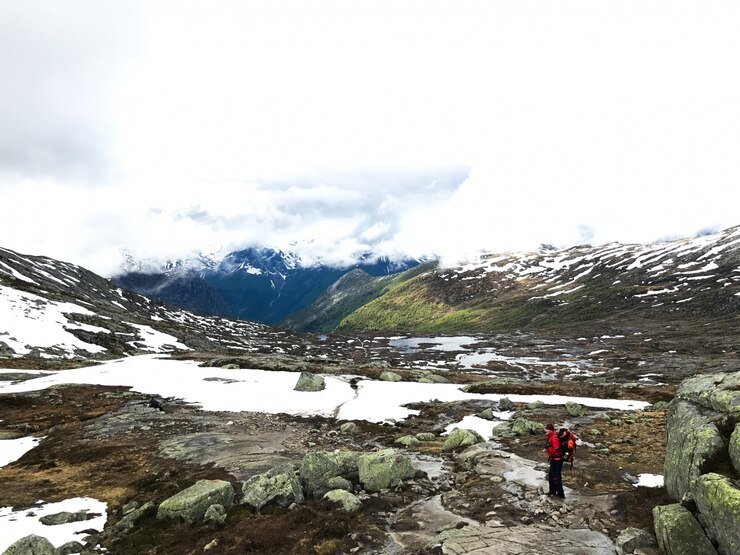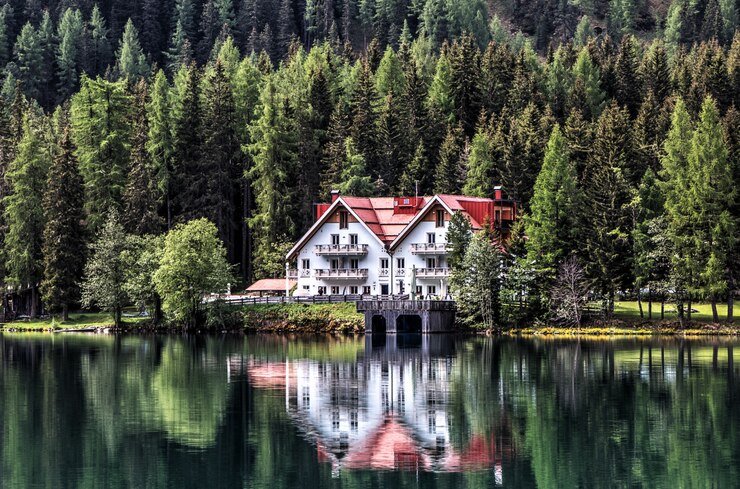Choosing the best time to undertake the Annapurna Base Camp (ABC) trek is crucial for ensuring an optimal experience, as the weather and seasonal conditions can significantly impact the trek. The ideal time to embark on this adventure is generally during the spring (March to May) and autumn (September to November) seasons. These periods offer the most favorable weather conditions and the best trekking experiences.
Spring, from March to May, is one of the most popular times to trek to Annapurna Base Camp. During this season, the weather is typically stable and the temperatures are relatively moderate, making for comfortable trekking conditions. The days are usually sunny, with clear skies that offer unobstructed views of the Himalayan peaks. Spring also brings the blooming of rhododendrons and other wildflowers, adding vibrant colors to the landscape and enhancing the visual appeal of the trek. This season is also less crowded compared to autumn, providing a quieter and more serene trekking experience.
Autumn, from September to November, is another excellent time for the ABC trek. The weather during autumn is characterized by clear skies and stable conditions, which are ideal for trekking. The temperatures are cooler but manageable, with crisp mornings and pleasant afternoons. This season is popular among trekkers, leading to busier trails, but the views of the snow-capped peaks are spectacular, and the air is typically clear, offering some of the best photographic opportunities. The autumn season also marks the end of the monsoon rains, which means that the trails are generally dry and less muddy, reducing the risk of slips and falls.
In contrast, the monsoon season (June to August) is generally less favorable for trekking. During these months, heavy rainfall can lead to slippery trails, landslides, and reduced visibility due to frequent clouds and mist. The monsoon can also bring higher humidity and the potential for leeches on the trail, making trekking less comfortable and more challenging.
Winter (December to February) presents its own set of challenges. While the winter months offer stunning, crisp views of the mountains, the temperatures can drop significantly, especially at higher altitudes. Snowfall can make the trails treacherous and challenging, and some sections might become inaccessible. The cold weather requires additional gear and preparation to ensure safety and comfort, which can be demanding for many trekkers.
In summary, spring and autumn are the most favorable times for the Annapurna Base Camp trek, offering stable weather, clear views, and a generally pleasant trekking experience. Choosing to trek during these seasons maximizes the likelihood of experiencing the beauty of the Himalayas in the best possible conditions.
Introduction to ABC Trek Seasons
The Annapurna Base Camp (ABC) trek spans diverse environments and is influenced significantly by the different seasons. Understanding the characteristics of each season is crucial for planning a successful trek. The trek, renowned for its breathtaking views and cultural richness, offers varied experiences depending on the time of year. The primary trekking seasons are spring, autumn, and winter, each presenting distinct weather patterns, advantages, and challenges. Spring and autumn are generally favored for their favorable conditions, while winter poses more extreme challenges. Each season shapes the trekking experience, impacting weather, trail conditions, and overall comfort. By aligning your trek with the season that best suits your preferences and preparation, you can ensure a more enjoyable and memorable adventure to Annapurna Base Camp.
Overview of Weather Patterns
The weather patterns along the Annapurna Base Camp trek Cost vary significantly with the seasons, affecting the overall trekking experience. During spring (March to May), the weather is typically stable and moderate, with clear skies and moderate temperatures, making it an ideal time for trekking. The temperatures range from 10°C to 20°C at lower elevations and can drop to around -10°C at the base camp, though the conditions are generally pleasant for trekking. Autumn (September to November) offers similarly favorable weather, with crisp mornings, sunny afternoons, and cool evenings. Temperatures range from 5°C to 15°C at lower altitudes and can be around -5°C to -10°C at the base camp. Winter (December to February) brings colder temperatures and the possibility of snow. Daytime temperatures can be around 0°C to 10°C, while nighttime temperatures can plummet below -15°C at higher altitudes. Snowfall can make trails challenging, with reduced visibility and risk of avalanches. Each weather pattern requires careful planning to ensure safety and comfort during the trek.
Benefits of Trekking in Spring
Trekking to Annapurna Base Camp in spring, from March to May, offers several benefits. Spring is characterized by stable weather conditions, which are ideal for trekking. The temperatures are moderate, providing comfortable hiking conditions, with daytime temperatures ranging from 10°C to 20°C and cooler nights at higher altitudes. One of the standout features of spring trekking is the blooming of rhododendrons and other wildflowers, which transform the landscape into a colorful spectacle. This floral display adds vibrant hues to the scenery, enhancing the trekking experience with stunning natural beauty. Additionally, the spring season sees fewer trekkers compared to autumn, resulting in less crowded trails and a more serene atmosphere. The clear skies and unobstructed views of the Annapurna massif are another advantage, offering excellent photographic opportunities and breathtaking vistas. Overall, spring combines pleasant weather, stunning natural beauty, and a quieter trekking experience, making it an appealing choice for many trekkers.
Benefits of Trekking in Autumn
Autumn, from September to November, is another prime season for trekking to Annapurna Base Camp, offering its own set of benefits. The weather during autumn is typically clear and stable, with sunny days and cooler temperatures that are ideal for trekking. Daytime temperatures are comfortable, ranging from 5°C to 15°C, while nights can be cool but manageable. Autumn is favored for its crystal-clear skies, providing some of the best visibility of the Himalayan peaks, including the Annapurna massif and Machapuchare. The trails are dry and less muddy compared to the monsoon season, which reduces the risk of slipping and makes for easier trekking conditions. However, autumn is the peak trekking season, leading to busier trails and more crowded teahouses. Despite the crowds, the vibrant colors of the fall landscape and the pleasant weather make autumn a popular time for trekkers seeking an optimal balance of good conditions and beautiful scenery.
Considerations for Trekking in Winter
Trekking to Annapurna Base Camp in winter, from December to February, presents several considerations that trekkers need to be aware of. Winter brings significantly colder temperatures, with daytime highs around 0°C to 10°C and nighttime lows potentially dropping below -15°C at higher altitudes. Snowfall is common during this season, which can make the trails challenging and increase the risk of avalanches. The snow can obscure paths, making navigation difficult and potentially hazardous. The cold weather requires additional gear and preparation, including thermal clothing, insulated boots, and sleeping bags rated for extreme temperatures. While winter offers stunning snow-covered landscapes and fewer crowds, which can lead to a more serene trekking experience, the cold and potential trail conditions demand careful planning and readiness. Trekkers must be prepared for the extreme conditions and ensure they have the appropriate gear and experience to handle the challenges of winter trekking in the Himalayas.
Rainy Season Challenges
Trekking to Annapurna Base Camp during the rainy season, which typically spans from June to August, presents several challenges that trekkers must consider. This period is marked by heavy monsoon rains, which can significantly impact trail conditions and overall trekking experience. The constant rainfall often leads to muddy and slippery trails, increasing the risk of slips and falls. Rivers and streams may swell, making crossings more difficult and potentially dangerous. Additionally, the frequent rain can cause landslides and washouts, which may lead to trail closures or rerouting. The lush greenery and blooming flora are a positive aspect of the rainy season, but the humidity and damp conditions can lead to discomfort and increased risk of infections such as fungal diseases. Visibility is also often reduced due to the persistent clouds and mist, which can obscure views of the majestic Himalayan peaks. Trekkers need to be prepared for these conditions with appropriate rain gear and a flexible itinerary that accommodates potential delays or changes in the trail.
Peak Season vs. Off-Season
The Annapurna Base Camp trek Weather sees distinct differences between peak and off-seasons that affect the overall trekking experience. The peak seasons are spring (March to May) and autumn (September to November), during which the weather conditions are most favorable. These periods are characterized by clear skies, moderate temperatures, and stable weather, making them ideal for trekking. During these times, the trails are busier, with a higher number of trekkers, which can lead to crowded teahouses and busier trails. Despite the crowds, the vibrant scenery and optimal weather make these seasons highly popular.
In contrast, the off-seasons, including the rainy season (June to August) and winter (December to February), present more challenging conditions. The rainy season brings heavy precipitation and muddy trails, while winter introduces extreme cold and potential snowfall, which can make trekking conditions more difficult. Off-seasons often mean fewer trekkers, leading to less crowded trails and teahouses, but they come with their own set of challenges. Trekking during these times requires careful preparation and a willingness to adapt to less predictable conditions, which can make the experience more demanding but also more rewarding for those seeking solitude and a unique adventure.
Impact of Weather on Trail Conditions
The weather significantly influences trail conditions on the Annapurna Base Camp trek, affecting the ease and safety of the journey. During the spring and autumn seasons, the trails are generally in excellent condition, with clear skies and stable weather providing optimal trekking conditions. The paths are usually dry and well-defined, allowing for smooth and enjoyable hiking. However, the monsoon season brings heavy rainfall, which can lead to muddy, slippery trails and potential landslides. Streams and rivers may become swollen, posing challenges for crossings and increasing the risk of accidents.
In winter, snow and ice can cover the trails, making them slippery and more difficult to navigate. The accumulation of snow can obscure the path and increase the risk of avalanches, especially in higher elevations. Extreme cold also makes the trails less hospitable, requiring trekkers to be well-prepared with appropriate gear. The impact of weather on trail conditions is a crucial consideration for planning, as it affects both the safety and enjoyment of the trek. Trekkers must be prepared to adapt to varying conditions and ensure they have the right equipment and knowledge for their chosen season.
Recommended Gear for Different Seasons
Selecting the appropriate gear for the Annapurna Base Camp trek varies by season and is crucial for ensuring comfort and safety. In spring and autumn, when the weather is generally mild and stable, trekkers should focus on layered clothing to manage temperature fluctuations. A lightweight waterproof jacket, thermal base layers, and comfortable trekking pants are essential. Sturdy trekking boots with good grip and a reliable daypack are also recommended, along with a sleeping bag suited for moderate temperatures.
During the rainy season, a high-quality, waterproof rain jacket and pants are crucial to stay dry and comfortable. Waterproof trekking boots and gaiters can help manage muddy and slippery conditions. Additionally, a good-quality rain cover for your backpack is important to protect your gear from getting soaked.
In winter, the gear requirements become more demanding due to the extreme cold and potential snow. Insulated, waterproof boots, thermal clothing, and a four-season sleeping bag are necessary to handle the harsh temperatures. Crampons and trekking poles can aid in navigating icy or snow-covered trails. Proper layering, including a base layer, insulating layer, and waterproof outer layer, helps in maintaining warmth and flexibility.
Health and Safety Concerns by Season
Health and safety concerns on the Annapurna Base Camp trek vary significantly with the seasons. In spring and autumn, the main concerns include altitude sickness, which can affect trekkers at high elevations. It is essential to acclimatize properly and stay hydrated. Additionally, the relatively stable weather conditions during these seasons reduce the risk of weather-related accidents, but trekkers should still be cautious of sudden weather changes.
During the rainy season, the risk of slips, falls, and waterborne illnesses increases due to the muddy and slippery trails. The high humidity and damp conditions can also lead to fungal infections and other health issues. Proper rain gear and good hygiene practices are crucial in mitigating these risks.
In winter, the primary concerns are the extreme cold and potential snow hazards. Frostbite and hypothermia are serious risks, necessitating the use of adequate thermal gear and careful monitoring of weather conditions. The snow can also obscure trails and increase the risk of avalanches, so trekkers should be prepared with proper equipment and knowledge of avalanche safety.
Each season presents unique challenges that require careful planning and preparation to ensure a safe and enjoyable trekking experience.
Cultural Events and Festivals
The Annapurna Base Camp trek Itinerary offers trekkers an opportunity to experience local cultural events and festivals, which are integral to the region’s vibrant traditions. During the trekking seasons of spring and autumn, various festivals may coincide with your journey. For instance, in the autumn, the Dashain festival, celebrated in September or October, is a major event in Nepal. Dashain is a time of family reunions, feasting, and rituals, and trekkers might witness celebratory activities and traditional dances in the villages they pass through. Similarly, Tihar, a festival held in October or November, is known for its colorful decorations and unique customs, such as honoring dogs and crows.
Spring is also a festive season with events like Holi, the festival of colors, which typically falls in March. Holi is celebrated with vibrant displays of colored powders and water, creating a lively atmosphere. Trekking during these festivals can offer a deeper cultural immersion as you experience the local customs and join in the celebrations. These events not only enhance the cultural experience of the trek but also provide unique opportunities to engage with local communities and understand their traditions.
Local Wildlife Activity by Season
The local wildlife around the Annapurna Base Camp region exhibits different activity patterns depending on the season, enriching the trekking experience with various encounters. In spring and autumn, wildlife activity is particularly prominent. During these seasons, animals such as the Himalayan tahr, a goat-like species, are more active and visible on the rocky slopes and forested areas. The clear weather also provides excellent opportunities for birdwatching, with species like the Himalayan monal, known for its striking plumage, frequently spotted.
In contrast, the monsoon season brings increased vegetation growth, which can make wildlife sightings more challenging but also attracts different species to the lush environment. The increased foliage provides cover for animals, making them less visible but more active in foraging for food.
Winter poses a different challenge as snow and cold weather lead to reduced wildlife activity. Many animals, including the red panda, may hibernate or move to lower altitudes to escape the harsh conditions. However, winter still offers the chance to see species adapted to colder climates, such as the snow leopard, though sightings are rare.
Personal Preferences and Trekking Experience
Choosing the best time to trek to Annapurna Base Camp often hinges on personal preferences and prior trekking experience. For those who prefer moderate temperatures and a vibrant landscape, spring and autumn are ideal. These seasons offer a balance of favorable weather, clear views, and comfortable trekking conditions, making them suitable for both novice and experienced trekkers. The trails are well-maintained, and the chances of experiencing the stunning natural beauty of the Himalayas are high.
On the other hand, trekkers seeking a more challenging adventure might consider the off-seasons. The rainy season, while offering lush green landscapes and fewer crowds, requires a higher level of preparedness due to the muddy trails and increased risk of slips. Winter, with its extreme cold and snow-covered paths, demands substantial experience and specialized gear but rewards with serene, snow-clad scenery and solitude.
Personal comfort, previous trekking experience, and desired adventure level should guide your choice of when to embark on the trek. Each season offers a unique experience, and understanding your preferences will help in selecting the most suitable time.
Planning Your Itinerary Around the Best Time
Planning your itinerary around the best time for the Annapurna Base Camp trekking involves considering both weather patterns and personal preferences to maximize the trekking experience. If trekking during the peak seasons of spring or autumn, ensure to book accommodations and permits well in advance due to the higher number of trekkers. These seasons offer optimal weather conditions and scenic beauty, making it easier to plan a straightforward and enjoyable trek.
For the rainy season, flexibility in your itinerary is crucial. The trails can be slippery and challenging, so allowing extra days for potential delays and having contingency plans for weather-related disruptions can enhance safety and comfort. Similarly, winter trekking requires careful planning for extreme conditions. Prepare for potential trail closures due to snow and ensure that you have appropriate gear and provisions for cold weather.
Mapping out your daily trekking distances, rest days, and acclimatization periods based on the season’s conditions can help in managing the physical demands of the trek. Consulting with local guides and trekking agencies can provide valuable insights and adjustments to your itinerary to accommodate seasonal variations.
Conclusion: Choosing Your Perfect Trekking Time
Choosing the perfect time to embark on the Annapurna Base Camp trek is pivotal to having a rewarding and enjoyable experience. Each season offers distinct advantages and challenges, shaping the trekking journey in unique ways. Spring and autumn are the most popular due to their favorable weather, clear views, and vibrant landscapes, making them ideal for a comfortable and visually stunning trek. The off-seasons—rainy and winter—offer their own appeals and difficulties, catering to trekkers seeking solitude, adventure, or a different kind of challenge.
Understanding the seasonal weather patterns, cultural events, wildlife activity, and personal preferences will guide you in selecting the best time for your trek. Whether you choose the lively peak seasons or the serene off-seasons, proper planning and preparation will ensure a memorable and successful Annapurna Base Camp adventure.











